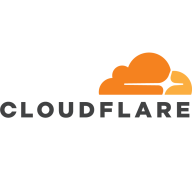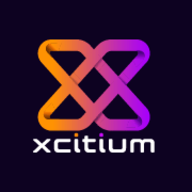


AWS WAF and Comodo cWatch are competing in the web application security sector. AWS WAF often leads in cloud integration and scalability, while Comodo cWatch is favored for threat intelligence capabilities.
Features: AWS WAF offers dynamic scalability, easy integration with AWS services, and API support for customization in complex deployments. Comodo cWatch provides comprehensive threat intelligence, real-time alerts, and multilayered security, focusing on extensive threat detection capabilities.
Room for Improvement:AWS WAF could enhance its threat intelligence features and develop more extensive cross-platform functionality. Some users desire more straightforward customization options and better bot attack handling. Comodo cWatch could improve cloud integration, offer more scalability options, and enhance its rule customization capabilities for advanced users.
Ease of Deployment and Customer Service:AWS WAF is easily deployable within AWS environments due to its native integration, offering comprehensive customer support. Comodo cWatch simplifies deployment across various platforms and provides diligent customer service, including 24/7 monitoring.
Pricing and ROI:AWS WAF provides flexible pricing based on usage, appealing for those within the AWS ecosystem. Comodo cWatch offers competitive pricing with bundled services, emphasizing proactive threat management and cost savings.



| Company Size | Count |
|---|---|
| Small Business | 46 |
| Midsize Enterprise | 8 |
| Large Enterprise | 25 |
| Company Size | Count |
|---|---|
| Small Business | 22 |
| Midsize Enterprise | 12 |
| Large Enterprise | 25 |
Cloudflare is a highly-regarded Content Delivery Network (CDN) and a Distributed Denial-of-Service (DDoS) protection solution. The robust global connectivity cloud platform that is Cloudflare ensures users are able to connect to the Internet quickly, securely, and reliably. Cloudflare is one of the world's largest networks in the marketplace today. Using Cloudflare, businesses, educational entities, NGOs, vloggers, bloggers, and anyone else with an internet presence can experience more secure, faster websites and applications.
Currently, there are millions of Internet locations on Cloudflare, and the Cloudflare network
continues to grow every day by the thousands. The solution is able to fulfill the requests for
millions of websites seamlessly and serves on average 45 million HTTP requests per second.
Cloudflare has safe, secure data centers in close to 300 cities worldwide to ensure every
client request is filled as quickly as possible. It is Cloudflare’s edge network that makes this
possible by keeping content and other services as close to each client as possible, so the
information requests are always only seconds away.
Many organizations that work in democracy, civil society, human rights, or the arts are able to
access Cloudflare's highest levels of protection for free via Project Galileo. Additionally, official
election websites can be secured from hacking and fraud through Cloudflare’s Project
Athenian, also at no additional cost.
Cloudflare can also help organizations of all sizes develop a robust zero-trust strategy to
ensure the highest levels of productivity and profitability. Employees, stakeholders, and end users have a greater level of satisfaction and overall improved user experience, which can, in
turn, result in higher revenues and overall ROI. Zero-trust and BYOD (bring your own device)
access ensure end users and employees always have the best resources and technology
available to them at all times.
Cloudflare benefits
Cloudflare has many benefits. Some of its most valuable benefits include:
- Faster load times
- Robust DNS security
- Intuitive cloud Web Application Firewall (WAF)
- Free universal SSL
- Image enhancement
- Automatic browser caching
- Next-generation cloud load balancer
- Accelerated Mobile Pages (AMP)
- Rate limiting
- Minification
- Zero-trust capabilities
- Cost-effective
- Reduced carbon footprint
Reviews from real users
“Many websites require an SSL certificate because they sell stuff and want SSL. Cloudflare
comes with an SSL certificate built in. It's automatic. You sign yourself up for Cloudflare, and
an SSL certificate automatically protects your website. If you have a connection between your
website and your host, the server, Cloudflare, and the host, you don't necessarily need a
certificate.” Spencer M., Owner at Tech Exchange
“What I like best about Cloudflare is that my company can use it to trace and manage
applications and monitor traffic. The solution tells you if there's a spike in traffic. Cloudflare
also sends you a link to check your equipment and deployment and track it through peering,
so it's a valuable tool.” Daniel P., Network Engineer at Ufinet
“The most valuable feature of Cloudflare is the GUI. You are able to control the solution very
well through the interface. There is a lot of functionality that is embedded in the service.” PeerSpot user, Competence Center Manager at a tech services company
AWS Web Application Firewall (WAF) is a firewall security system that monitors incoming and outgoing traffic for applications and websites based on your pre-defined web security rules. AWS WAF defends applications and websites from common Web attacks that could otherwise damage application performance and availability and compromise security.
You can create rules in AWS WAF that can include blocking specific HTTP headers, IP addresses, and URI strings. These rules prevent common web exploits, such as SQL injection or cross-site scripting. Once defined, new rules are deployed within seconds, and can easily be tracked so you can monitor their effectiveness via real-time insights. These saved metrics include URIs, IP addresses, and geo locations for each request.
AWS WAF Features
Some of the solution's top features include:
Reviews from Real Users
AWS WAF stands out among its competitors for a number of reasons. Two major ones are its user-friendly interface and its integration capabilities.
Kavin K., a security analyst at M2P Fintech, writes, “I believe the most impressive features are integration and ease of use. The best part of AWS WAF is the cloud-native WAF integration. There aren't any hidden deployments or hidden infrastructure which we have to maintain to have AWS WAF. AWS maintains everything; all we have to do is click the button, and WAF will be activated. Any packet coming through the internet will be filtered through.”
Cwatch delivers robust website protection from hackers - while it helps you stay calm when online. It does not just stop with protection but helps in scanning the website to remove malware instantly. It is a complete website security tool that delivers state-of-the-art protection techniques to ensure SMB website security from simple to complex threat landscape. It ensures early threat detection, instant solution and sophisticated preventive measures.
We monitor all Web Application Firewall (WAF) reviews to prevent fraudulent reviews and keep review quality high. We do not post reviews by company employees or direct competitors. We validate each review for authenticity via cross-reference with LinkedIn, and personal follow-up with the reviewer when necessary.